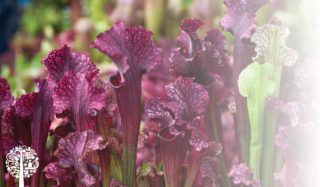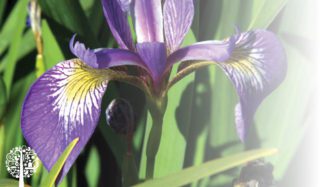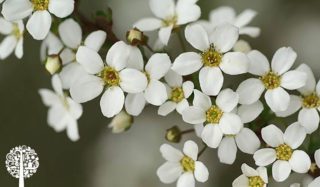Did you know that every province and territory in Canada has an official flower? From woodland areas to prairie grasslands, some of these blooms are even hardy enough to find root in cold northern regions! They’re as diverse and unique as the country. So in honour of Canada Day, let’s look at the flowers popping up in gardens from coast to coast.
Albert: Wild Rose
In 1930, Alberta school children chose the wild rose as the province’s official flower. Also known as prickly, bristly, or Arctic rose, this thorny shrub grows wild, producing sweet-smelling, five-petalled pink flowers from May to August.
British Columbia: Dogwood
The Pacific dogwood became B.C.’s floral emblem in 1956. Not a flower at all, this tree grows six to eight meters tall. The white and creamy blossoms or bracts open up in the late spring and are composed of clustered white leaves surrounding 30 to 40 small green flowers.
New Brunswick: Purple Violet
In 1936, the Women’s Institute of New Brunswick, the Lt. Governor, and school children picked the purple violet as the province’s official flower. Blooming in early summer, it grows wild in fields, woodlands, and gardens.
Newfoundland-Labrador: Purple Pitcher Plant
Don’t get on the wrong side of this carnivorous marsh plant. A base of tubular leaves captures unsuspecting insects and then drowns and eats them. The blooms last only two weeks in mid-spring and resemble an upside-down umbrella. It was chosen by Queen Victoria in 1863 to be on the Newfoundland penny; in 1949, the province joined Confederation, and in 1954, the pitcher plant became its official flower.

Nova Scotia: Mayflower
In 1901, provincial legislation declared the mayflower the flower of Nova Scotia. Growing throughout forested areas in early spring, delicate pink scented flowers appear on stems about 15-30 cm long.
Quebec: Blue Flag Iris
In 1999, the iris replaced the white Madonna lily as Quebec’s official flower. Although attractive, the lily did not grow well in Quebec. On the other hand, the blue flag iris grows wild from the St. Lawrence Valley to the shores of James Bay in the north of the province.

Ontario: Trillium
Trillium grandiflorum is renowned for its mid-spring and elegant three-petalled white flowers from northern Quebec to the southern United States. In 1937, a committee from the Ontario Horticultural Association recommended this plant as Ontario’s provincial flower.
Prince Edward Island: Ladyslipper
Named the province’s official flower in 1947, three of the 12 varieties of ladyslipper grow in the shady woodlands of Prince Edward Island. Blooming in late May into June, this unique flower is part of the orchid family. Its petals form a pouch that looks like a slipper, and as bees and insects enter and leave the sack, they brush against the male and female parts of the plant, pollinating it.
Manitoba: Prairie Crocus
In Manitoba, this plant has come to represent spring. Part of the buttercup family, it’s not a crocus at all. Considered an anemone or pasque flower, it’s one of the oldest provincial flowers, selected by school children in a province-wide vote in 1906.
Saskatchewan: Western Red Lily
The western red lily became Saskatchewan’s flower in 1941. A perennial native to North America, it grows 30-90 cm tall and produces orange or red flowers between June and August. Listed as an endangered species, the Provincial Emblems and Honours Act prohibits picking, uprooting, or destroying it.
Northwest Territories: Mountain Avens
Part of the rose family, narrow leaves support tiny white flowers that bloom from June to July. Historically significant to the Inuit, the twisting of the seed head marked when to move inland and hunt caribou. In 1957, it became the floral emblem of the Northwest Territories.
Nunavut: Purple Saxifrage
In the Inuktitut language, aupilaktunnguat (bold spots) is one of the first flowers of spring. Hardy to -40°C or lower, the plant reliably appears each season. Trailing leaves and stems culminate in bright single purple flowers, often so crowded together they appear as clusters. After Nunavut became an official territory in 1999, the plant was named its official flower.
Yukon: Fireweed
This self-seeding perennial is often considered invasive. Hardy to -40°C and drought tolerant, purple or white flowers are arranged spirally on reddish stems that rise 0.5-2.5 meters high. Growing prolifically throughout the Yukon, it was aptly named the territory’s provincial flower in 1957.
